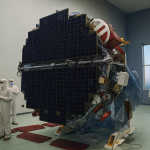- MIT researchers have two complementary breakthroughs: (1) a battery‑like electrochemical device that captures CO₂ while charging and releases it while discharging; and (2) self‑healing battery materials that repair cracks/voids and suppress lithium dendrites. They were developed by different MIT teams. MIT News
- The CO₂‑capturing device—often described as an “electro‑swing” system—works from ambient air (~400 ppm) up to flue gas, and the team has reported 7,000 charge–discharge cycles in the lab (with performance decline noted), along with energy use around ~1 GJ per ton of CO₂ depending on conditions. MIT News
- MIT’s self‑healing, flowable‑yet‑solid electrolyte demonstrated auto‑repair of cracks at ~5.6 μm/hour and active suppression of lithium metal instabilities—key to longer‑lived, safer, high‑energy batteries. Wiley Online Library
- Important reality check: as of October 12, 2025, there is no peer‑reviewed paper announcing a single, commercial‑ready device from MIT that simultaneously self‑heals and performs CO₂ capture. The underlying capabilities exist separately and could be combined in future prototypes. MIT News
- Related MIT work shows how fast the field is moving: a “concrete battery” (ec³) supercapacitor platform recently achieved 10× higher energy storage (now ~2 kWh per m³) and highlights MIT’s push toward multifunctional materials (energy storage alongside features such as self‑healing and carbon sequestration). MIT News
- Commercialization is underway for the CO₂‑capture side via Verdox, an MIT spin‑out that raised $80M to scale electro‑swing adsorption; MIT engineers also reported 2025 improvements that could boost capture efficiency 6× and cut costs ~20%. Chemical & Engineering News
The idea in one line
A new class of battery‑like CO₂ capture systems from MIT and self‑healing battery materials from MIT point to a future where electrochemical energy devices both fix themselves and remove carbon—but today they are distinct advances on a collision course.
What MIT actually built on the CO₂ side
In 2019, MIT chemical engineers Sahag Voskian and T. Alan Hatton introduced an electrochemical process called Faradaic electro‑swing reactive adsorption. In simple terms, it’s a stack of thin electrodes coated with polyanthraquinone on carbon nanotubes. When you charge the device, the electrodes selectively bind CO₂ from a passing gas stream—even at atmospheric concentrations. When you discharge, the electrodes release a stream of pure CO₂ that can be used industrially or stored. As MIT put it at the time: “The device is essentially a large, specialized battery that absorbs carbon dioxide…as it is being charged up, and then releases the gas as it is being discharged.” MIT News
Peer‑reviewed work in Energy & Environmental Science detailed how the quinone‑based electrodes capture CO₂ on charge and release it on discharge—at room temperature and ambient pressure—and provided cycling data consistent with the lab demonstration. RSC Publishing
Two helpful benchmarks from MIT’s reporting:
- Durability: at least 7,000 cycles tested in the lab (with ~30% efficiency loss), with an aim to push toward 20,000–50,000 cycles. MIT News
- Energy use: around ~1 gigajoule per ton of CO₂ captured (varies with concentration and setup), which compares favorably to some incumbent sorbent/thermal systems. MIT News
Expert views:
Voskian emphasized the “binary nature” of the adsorbent’s affinity for CO₂—either high (during charge) or low (during discharge)—and Hatton called it a “clear demonstration of the power of electrochemical approaches that require only small swings in voltage.” MIT News
Commercially, Verdox—co‑founded by Hatton and Voskian—has raised $80 million to scale the tech, and has attracted partners in heavy industry. Chemical & Engineering News In 2025, another MIT team led by Kripa Varanasi showed nanofiltration can decouple conflicting steps in electrochemical capture, boosting overall efficiency up to 6× and lowering costs by ~20%, further strengthening the case for electricity‑driven CO₂ removal. MIT News
What MIT actually built on the “self‑healing battery” side
In 2024, researchers associated with Ju Li’s group reported a self‑healing, flowable‑yet‑solid electrolyte that can repair cracks and voids—key precursors to failure—in lithium‑metal batteries. The material actively suppresses dendrites (needle‑like growths that can short a cell) and self‑repairs at ~5.6 μm/hour through a two‑step healing mechanism. That combination—solid‑state safety plus flowability to accommodate stress—is unusually powerful for durability. Wiley Online Library
This builds on other MIT work that has attacked dendrites—from showing how applied compression can redirect and neutralize them in solid electrolytes (2022), to a broader ecosystem of self‑healing binders and polymer electrolytes explored across the field. The through‑line is clear: self‑healing can extend cycle life and safety, essential for mainstreaming high‑energy chemistries. MIT News
Why experts care:
Reviews now routinely flag self‑repair as a central design goal for next‑generation batteries because it tackles mechanical degradation—one of the most stubborn limits on longevity. As a 2024 review put it, self‑repairing binders and electrolytes can significantly improve durability and stabilize high‑energy electrodes. ScienceDirect
So…did MIT invent a single “self‑healing battery that absorbs CO₂”?
Not yet. The CO₂‑capturing device (electro‑swing) and the self‑healing electrolyte are separate MIT advances. That said, the convergence is plausible: a future electrochemical system could pair CO₂‑reactive electrodes with a self‑healing electrolyte (or self‑healing electrode/binder) to boost durability and reduce maintenance in capture hardware—or in Li–CO₂ battery chemistries being explored by MIT’s Betar Gallant and colleagues, who in 2018 showed a lithium–CO₂ battery that converts captured CO₂ to solid carbonates during discharge (early stage; ~10 cycles in that study). MIT News
Bottom line: talk of a fully integrated “self‑healing CO₂‑absorbing battery” is forward‑looking shorthand for two real but distinct MIT breakthroughs that are likely to inform each other as prototypes mature. MIT News
Why this could reshape energy—and climate
- Cheaper carbon removal, powered by electrons: If electro‑swing devices keep gaining efficiency (e.g., via nanofiltration), they could deliver lower‑cost, modular CO₂ capture that runs on renewable electricity—at ambient conditions, without heat‑hungry sorbent regeneration. A self‑healing stack would further cut downtime and O&M costs. MIT News
- Pathways to circular chemistry: The 2018 MIT work on Li–CO₂ shows one route to embed captured carbon directly in battery reactions as solid carbonates, suggesting future carbon‑utilization plays alongside capture. MIT News
- Infrastructure that stores energy—and lasts: MIT’s ec³ results push the idea of multifunctional materials (energy storage plus properties like self‑healing and carbon uptake), hinting that energy devices themselves could be designed for resilience and embedded climate services. MIT News
What experts are saying
- “The device is essentially a large, specialized battery that absorbs CO₂ while charging and releases it while discharging,” explained MIT’s 2019 report on the electro‑swing system. MIT News
- “This CO₂ capture technology is a clear demonstration of the power of electrochemical approaches that require only small swings in voltage,” added T. Alan Hatton. MIT News
- On boosting capture efficiency, Kripa Varanasi notes: “We need to think about scale from the get‑go,” framing the 6× efficiency and ~20% cost improvement as a step toward gigaton‑scale systems. MIT News
- On carbon‑reactive batteries, Betar Gallant highlighted that combining CO₂ capture chemistry with nonaqueous battery electrolytes can activate CO₂ for more efficient electrochemistry (with early‑stage limits acknowledged). External expert Kisuk Kang called the approach “exciting” for its interdisciplinary leap. MIT News
- On making storage multifunctional, Admir Masic emphasizes “multifunctional concrete” that integrates energy storage, self‑healing, and carbon sequestration as a sustainability key—an ethos that applies broadly to energy devices. MIT News
The road to “commonplace” self‑healing CO₂‑electrochemical systems
Technical hurdles to close
- Materials integration: Marrying quinone‑based CO₂ electrodes (or Li–CO₂ chemistries) with self‑healing electrolytes requires chemical compatibility and stable interfaces across thousands of cycles. RSC Publishing
- Cycle life at scale: Electro‑swing devices need decade‑class durability in industrial environments; self‑healing helps, but field data must confirm lab gains. MIT News
- Cost & manufacturability: Even with 2025 efficiency gains, capture costs must fall further; roll‑to‑roll electrode manufacturing could help—an approach MIT has flagged for the CO₂‑capture electrodes. MIT News
- System architecture: For Li–CO₂ batteries, early studies showed ~10 cycles; electrolyte and catalyst design must mature before any practical storage product using atmospheric CO₂ can emerge. MIT News
Why expectations are still high
A 2024 review underscores that self‑repairing binders/electrolytes are among the most promising levers to stabilize high‑energy batteries—exactly the durability lever CO₂‑electrochemical systems would need to run 24/7. Layer onto that the progress and investment around electro‑swing capture (e.g., Verdox), and you can see why many observers expect self‑healing features to become commonplace in next‑gen electrochemical platforms, including CO₂‑related ones—once integration challenges are solved. ScienceDirect
How to tell hype from real progress (a quick checklist)
- Peer‑reviewed mechanism? Look for quinone/CO₂ electrochemistry or Li–CO₂ pathways documented in journals (2018–2019 and onward). RSC Publishing
- Independent durability data? Device‑level cycle counts with degradation curves, not just prototypes. MIT News
- System‑level cost claims tied to published models? MIT’s 2025 nanofiltration study provides transparent efficiency and cost estimates. MIT News
- Materials that heal themselves—quantified? Watch for healing rates (μm/hour), recovery of ionic conductivity, and dendrite suppression under realistic cycling. Wiley Online Library
The upshot
MIT has not yet unveiled a single box that is both a self‑healing battery and a CO₂ vacuum—but the Institute has demonstrated both halves convincingly: a battery‑like CO₂ capture platform and self‑healing battery materials that dramatically improve durability. If and when those halves come together, the result could shrink carbon‑removal costs, extend device lifetimes, and accelerate a shift to electrified, modular climate tech. That’s a breakthrough worth watching closely. MIT News
Sources & further reading
- MIT News: “MIT engineers develop a new way to remove carbon dioxide from air” (Oct 24, 2019) — overview, quotes, performance figures. MIT News
- Energy & Environmental Science (2019): “Faradaic electro‑swing reactive adsorption for CO₂ capture” — core mechanism and cycling data. RSC Publishing
- MIT News: “New battery gobbles up carbon dioxide” (Sep 21, 2018) — Li–CO₂ battery concept by Gallant’s group (early‑stage). MIT News
- Advanced Materials (2024): “A Self‑Healing, Flowable, Yet Solid Electrolyte Suppresses Li‑Metal Morphological Instabilities” — self‑healing electrolyte with quantified repair rate. Wiley Online Library
- MIT News: “How to solve a bottleneck for CO₂ capture and conversion” (May 20, 2025) — nanofiltration boosts efficiency 6× and lowers cost ~20%. MIT News
- MIT News: “Concrete ‘battery’ now packs 10× the power” (Oct 1, 2025) — ec³ platform and the case for multifunctional, durable energy materials. MIT News
- C&EN: “Verdox raises $80 million for electric carbon‑capture” (Feb 4, 2022) — commercialization snapshot. Chemical & Engineering News
Context note: If you’ve seen headlines claiming MIT already has a self‑healing CO₂‑absorbing battery, they’re condensing two separate MIT achievements into one. The science is real and advancing fast—but the integration step is the next frontier. MIT News












